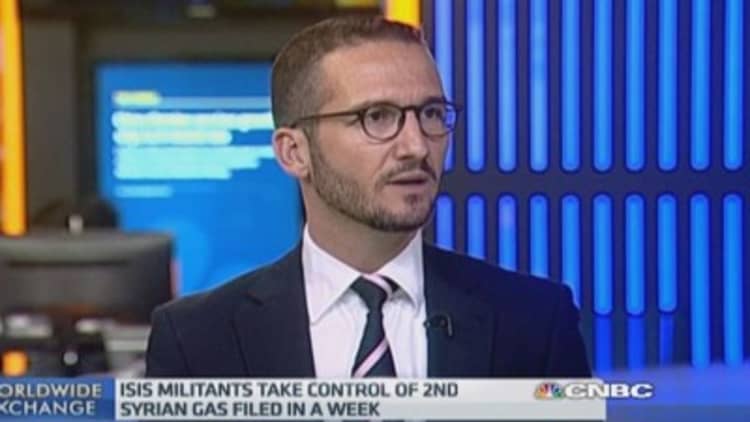Global oil prices reversed a rally on Monday, with benchmark returning to the red after a big hike in Saudi Arabia's monthly export prices was viewed as a signal OPEC's largest producer may be seeking to curb output.
State oil firm Saudi Aramco said it would raise the price of its flagship Arab light crude in December for customers in Asia and Europe, reversing some price cuts the previous month. It will cut prices for U.S. buyers.
The kingdom has signaled it was willing to put up with lower oil prices, and last month's big price cuts had triggered a deeper decline in global markets. The higher prices for December cargoes may now discourage buyers, some said.
Oil traders may see the latest price hikes as an indication that the Saudis are now "less worried about market share and more concerned about crude prices," said Joseph Posillico, senior vice president of energy derivatives at Jefferies LLC.
The U.S. dollar powered to a seven-year peak against the yen and a two-year high against the euro on Monday, extending gains after the Bank of Japan's latest stimulus and punishing oil and gold priced in the U.S. currency.
Although prices initially rose in midday trading, by late in the U.S. session both the U.S. and international contracts had retreated.
Brent was sharply lower, off more than $1 to near $84 per barrel. Earlier it had slipped below $85 as a stronger dollar punished oil and gold, commodities that are priced in the U.S. currency.
Read More$2.80 gas by Thanksgiving, pro predicts
U.S. crude tumbled by more than 2 percent, ending down $1.76 at $78.78 per barrel.
The Organization of the Petroleum Exporting Countries pumped 120,000 barrels per day less crude oil in October, a Reuters survey showed on Friday, although overall supply stayed well above the cartel's output target of 30 million bpd.
Less oil from Nigeria and Angola brought total OPEC supply to an average of 30.72 million bpd in October, down from a revised 30.84 million bpd in September.

OPEC ministers meet in Vienna on Nov. 27 to decide on production targets for next year.
Most oil analysts forecast no change in the group's output target, although French bank Societe Generale expects a cut.
"Though the [OPEC] meeting could be ugly, we believe they will ultimately succeed in agreeing on a shared output cut of 1.0-1.5 million bpd," said Michael Wittner, senior oil analyst at Societe Generale in New York.
Venezuela and Ecuador are preparing a joint proposal to defend oil prices that the two countries will present at the next OPEC meeting, Venezuelan President Nicolas Maduro has said.
Read MoreOPEC may be forced to act on oil prices
"We're working internationally to defend, as we should, the price of oil," Maduro said in a televised broadcast on Friday.
Economic data has been mixed for oil.
Growth in China's vast factory sector accelerated to a three-month high in October as smaller firms saw more orders, according to a private survey, although overall numbers pointed to a sluggish economy that is losing momentum.
Read MoreChina HSBC final PMI at 50.4 in October
The final HSBC/Markit Manufacturing Purchasing Managers' Index for China edged up to 50.4 in October from September's 50.2.
While the headline number looked slightly better, growth rates slowed in several key areas heading into the fourth quarter, putting the Chinese government's full-year growth target of 7.5 percent further in doubt.
A survey by China's National Bureau of Statistics on Saturday showed factory activity fell to a five-month low last month as firms struggled with slowing orders and rising borrowing costs.
CNBC contributed to this report.

